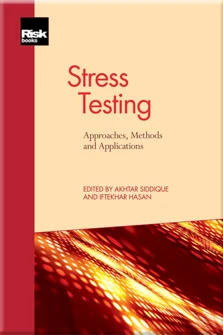Operational Risk: An Overview of Stress-Testing Methodologies
Brian Clark and Bakhodir Ergashev
Introduction to Stress Testing: Approaches, Methods and Applications
Governance over Stress Testing
Stress Testing and Other Risk-Management Tools
Stress Testing for Market Risk
The Evolution of Stress Testing Counterparty Exposures
Operational Risk: An Overview of Stress-Testing Methodologies
Stress Testing of Bank Loan Portfolios as a Diagnostic Tool
Stress-Test Modelling for Loan Losses and Reserves
A Framework for Stress Testing Banks’ Corporate Credit Portfolio
EU-Wide Stress Test: The Experience of the EBA
Stress Testing Across International Exposures and Activities
Liquidity Risk: The Case of the Brazilian Banking System
Determining the Severity of Macroeconomic Stress Scenarios
Numerous international regulatory standards require the implementation of stress testing as a risk-management tool. The Basel Committee on Banking Supervision (2009) (henceforth BCBS), a key international regulatory guidance on stress testing, recommends including stress tests in a bank’s overall risk-management toolkit. The document broadly refers to stress tests as “the evaluation of a bank’s financial position under a severe but plausible scenario”. It provides general principles for stress testing practices, while allowing banks ample discretion in choosing stress-test methodologies. However, the document refrains from prescribing any particular stress-testing approach, thereby leaving banking institutions with broad discretion in choosing stress-testing methodologies.
The purpose of stress testing is often viewed by regulatory bodies and financial institutions as a means to determine how a financial institution’s capital or financial position would be impacted on by an adverse scenario. In most applications, this requires modelling a link between a macroeconomic event or series of macroeconomic events and the performance of a bank’s portfolio of assets. In the context of
Copyright Infopro Digital Limited. All rights reserved.
As outlined in our terms and conditions, https://www.infopro-digital.com/terms-and-conditions/subscriptions/ (point 2.4), printing is limited to a single copy.
If you would like to purchase additional rights please email info@risk.net
Copyright Infopro Digital Limited. All rights reserved.
You may share this content using our article tools. As outlined in our terms and conditions, https://www.infopro-digital.com/terms-and-conditions/subscriptions/ (clause 2.4), an Authorised User may only make one copy of the materials for their own personal use. You must also comply with the restrictions in clause 2.5.
If you would like to purchase additional rights please email info@risk.net











